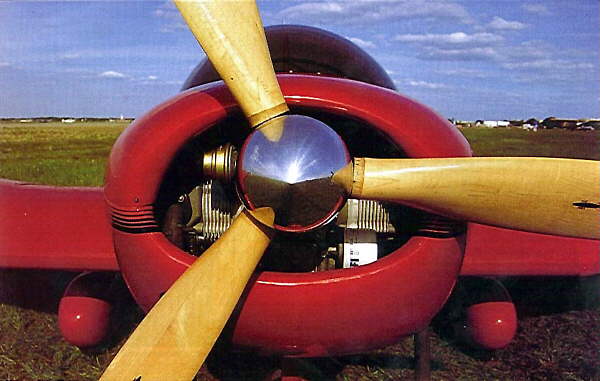 |
| A TIGHTLY COWLED 80 HORSEPOWER ROTAX 912 provides impressive takeoff performance and is said to be capable of giving the Super Zodiac a top speed of 140mph. |
The Super Zodiac 601
Chris Heintz is one of the most prolific designers in the kit-build industry, and the tricycle-geared Super Zodiac is his latest creation. Could you build it? How does it fly? Jim Reynolds has the answers
There aren't many secrets left when it comes to designing light aircraft. The name itself for that variety of flying machine gives away one of the chief design goals. Keep the aircraft as light as possible, while considering other characteristics such as structural strength, performance, and reasonable creature comforts and the designer greatly improves his chances of success.
The new Super Zodiac CH 601 HDS has some impressive numbers in all of these important categories. It weighs a mere 570 pounds, yet is stressed for 6.8 G, both negative and positive, and the 44-inch wide cabin has plenty of room for two big people. To put this in perspective, a comparison with the Cessna 150 is in order. The Cessna weighs almost exactly double the Super Zodiac, the cabin is four inches narrower, and Cessna won't guarantee that its little two seater will stay together if you pull more than 4.4 positive or 1.6 negative G. In addition the Zodiac will go a good deal faster on a lot less horsepower.
The tricycle gear version of the Super Zodiac made its debut at this year's Sun 'n Fun fly-in at Lakeland, Florida. It was introduced with a tail-wheel last year. Obviously designer Chris Heintz is hoping that the new training gear arrangement will interest a number of pilots who are afraid they will go zig and zag down the runway in a tail-wheel aircraft. It is not an exaggeration to say that the Super Zodiac "trike" in a beautiful red paint scheme was one of the "stars" of Lakeland. During much of the week-long show there was an elbow-to-elbow crowd around it, blocking the view for the "nonpushy" types. Even during the photography session for this article we had to "shoo" people away who walked in front of the camera to get a better took. It was not until the show was over that Chris has time to quit answering a steady stream of questions and hop into the plane so we could go flying.
Heintz brings some impressive credentials to the kit-build industry. A graduate of the ETH Institute of Switzerland, he went to work for Aerospatiale on the Concorde project, then became the chief engineer at Avions Robin where he designed several of their two- and four-seat aircraft. After leaving France, he moved his family to Canada and went to work for de Havilland as a stress engineer. Throughout his career he spent his spare time designing and building his own aircraft. His first flew in 1970. In 1974 Chris quit his full-time job to open a kit-build aircraft company he named Zenair Ltd. Over the years the company has introduced twelve kit-built aircraft.
Entry into his latest creation is made easy by an extremely clever double hinged canopy design. The canopy is held fast by latchable hinges on each cockpit sidewall. If you are entering from the left you unlock your side, pivot the canopy up and get in. After you have latched your side the passenger boards from the right by reversing the procedure. Visibility is nearly panoramic through the ocean of heavily tinted plexiglass that forms the canopy. Chris told me it was one of his main objectives on the project. "Most people fly on Saturday and Sunday and there are a tot of things up there they need to see." The Super Zodiac is powered by an 80 horsepower Rotax 912. Heintz says the engine is the secret of the plane's performance. The Zodiac line was first introduced in 1984 with a converted Volkswagen automotive engine. Chris admits that with that powerplant the early Zodiac was "just okay" and after 200 units were sold the line was discontinued. A few years ago, the advent of the tight and powerful Rotax 912 made him dust off the old Zodiac plans and rethink the project. This time, in addition to the new powerplant, there would be a wider cockpit and a smaller tapered wing to increase the top speed.
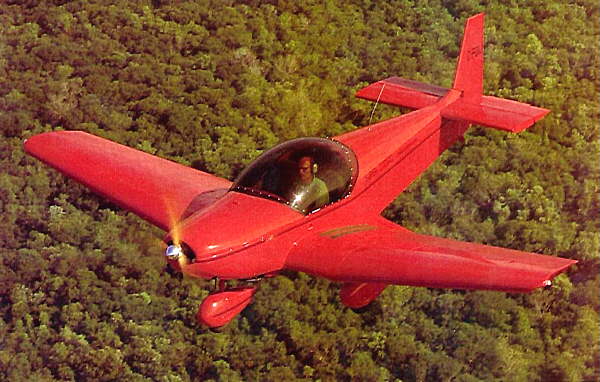 |
| WITH ITS STANDARD TANK, the Super Zodiac is capable of taking two adults and their baggage on a 550 mile cross-country. An optional wing tanks adds another 400 miles range. |
The panel on the Super Zodiac is fairly narrow but there is sufficient room for the instruments that one would normally install in this class of aircraft. By using miniature dials there is probably enough space for an IFR kit. There is a tiny "T" handled throttle on each side of the panel and between the seats there is a single stick, notched into the shape of a "Y", so the aircraft can be flown from either seat. Chris felt comfortable enough with the plane's docile flight characteristics to offer to let me fly it solo but I asked him to come along to explain some of its performance characteristics. Starting the aircraft is fairly straightforward. With the throttle at idle, the master and both mags are switched on, before hitting the starter switch. The little Rotax came to life instantly and soon we were taxiing out to a grass runway. The Super Zodiac responded nicely to rudder inputs that were necessary to stay on a winding taxiway that was not much more than a path in the grass. To tighten up a turn you can tap on the toe brakes on top of the rudders. There are two electric trims to be positioned before takeoff. One controls the elevator trim and the other is on the aileron. Three lights next to the rocker switch control on each trim panel tell you where they are positioned. When the green light in the middle winks on, they are in neutral. The fuel gauge is a clear tube in the middle of the instrument panel and it lets you know if you have at least a half a tank. If you do not have half a tank it will not give you any reading at all, even though the tank may be just under the halfway point. Chris says his rationale for the unusual gauge is simple. He does not want anyone running out of fuel in one of his creations so he has done everything he can to encourage them to stay on the ground unless they have a plenty of petrol.
Looking over my notes I see that I had a one word description for the Zodiac. It is "Zippy"
After checking the flight gauges, making a brief runup and exercising the controls we pulled onto the runway and I pushed the tiny throttle to the stop. With an afternoon temperature of 70 degrees the plane raced down nearly 800 feet of turf before I felt the controls come alive. Before I was ready to rotate, Chris said we had flying speed and I should ease back on the stick. As the aircraft transitions from earth to sky, you need to release some of the back pressure on the stick to prevent over rotation. In this phase of flight, the control inputs are best described as "delicate", and it took a few circuits before I got it just right. I glanced at my watch just as we broke ground to check on the rate of climb. When the sweep-hand reached a minute, we had put 900 feet below us, which is a little less than the 1,100 feet per minute claimed in the company literature, but then it was a warmer than standard day. The generous use of plexiglass in the cockpit made spotting other traffic a snap. This would be an excellent aircraft at busy airports. Leveling off and reducing to 60 percent power we saw 110 mph indicated, which Chris told me was actually 125 mph because of an error in the airspeed indicator.
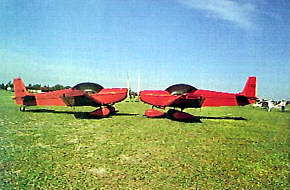 |
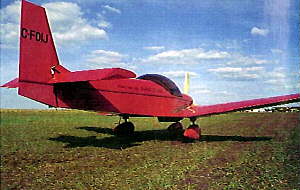 |
| THE TAILWHEEL VERSION OF THE
SUPER ZODIAC was introduced List year. THE NOSEWHEEL MODEL made its debut at Florida's Sun 'n Fun fly-in. |
THE CLEAN LINES OF THE SUPER ZODIAC are part of the reason for its impressive speed |
The cockpit seemed to be fairly quiet, with more noise from the slipstream than from the engine. It was possible to be heard by speaking in a loud voice but if I were flying a Super Zodiac on a regular basis I would bring along my headset. After tweaking the trim switches I took my hand off the stick to check on the craft's inherent stability. She ploughed straight ahead like a railroad train on a flat prairie - very impressive particularly when you consider that this is a relatively small aircraft with only a 23-foot wingspan. Because there was a considerable error in the airspeed indicator and I could not get a "lock-on" with my portable GPS, I cannot verify or dispute the factory's claim that the Super Zodiac will cruise at 140mph. It sounds like a good deal on an 80 horsepower motor but this is a very tight, clean airframe and I suspect the high cruise claim may be either correct or not far from the mark. My notes reflect that after rolling her in and out of a series of steep turns I found the controls to be "delicious". To my mind the balance of ailerons, rudder and elevator is just about perfect. The Super Zodiac responds instantly to very light pressures but is not "twitchy". That is not achieved easily and Chris is to be congratulated. After clearing the area I pulled the throttle back and the nose up for a stall. The actual break came at 58mph indicated but once again Chris reminded me of the instrument error and said that a more realistic reading would be 50mph. Before the nose dropped, there was plenty of buffeting to indicate that we were running out of airspeed. The break was fairly sharp but the rudder stayed effective, with enough authority to pick up a wing if necessary. A quick application of power had us flying again with no appreciable loss of altitude. Chris wanted me to try a full power stall, so after advancing the throttle I once again pulled back on the stick. We were at a ridiculously steep attitude before the actual stall and easing forward on the stick stopped the maneuver, with the aircraft flying away with no loss of altitude.
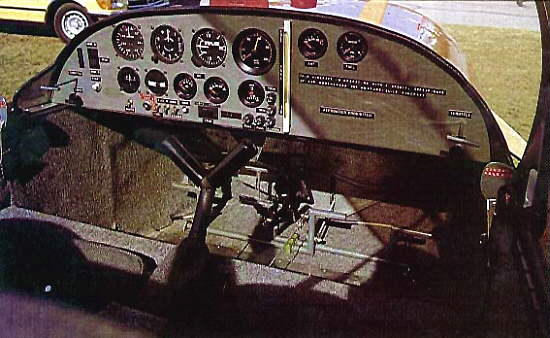 |
| THE SUPER ZODIAC COCKPIT has plenty of room for two big adults. A "Y" shaped stick allows either occupant to fly the aircraft. Panel space is somewhat limited but appears to have just enough room for a carefully planned IFR kit |
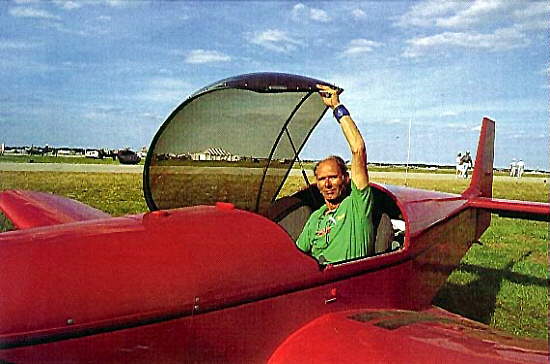 |
| WITH A DOZEN PLANES TO HIS CREDIT DESIGNER Chris Heintz is one of the most prolific kit-plane creators in the industry. His latest, the Super Zodiac, features a clever pivoting canopy design that allows entry from either side of the aircraft |
Chris stressed that it would be nearly impossible for anyone to do that on takeoff because the radically steep angle should be more than enough warning that they are begging for trouble.
Heading back to the airport I slowed her down for the pattern. Even though it was almost sunset, there were other aircraft in the pattern and even a motorized parachute was making a pass over the field. All of this made for a very non-standard approach with plenty of "S" turns and power adjustments to provide adequate spacing. It was a good chance to see first-hand how the Super Zodiac would handle just about the worst anyone could expect to see at their local airport. Although we were in the slow flight mode, the controls stayed nice and crisp and I felt very comfortable in this less than ideal situation. When it came time to land I brought the Rotax to idle, to glide the last few hundred feet to the runway. The feel in this realm of flight is of a much heavier aircraft, such as Bonanza or a Mooney. Because of that and the tendency of the Super Zodiac not to float, being able to hit a precise touchdown point on the runway should be a routine affair after an hour or two of practice. I enjoyed the first one so much I brought in the power and tried two more circuits. As I got to know the airplane each one was better than the last. The lights of Lakeland were winking on below us as we lined up for the last landing.
Add it all up and you have about the cost of a good car, but that won’t go at 140 mph, even down-hill. And about the build-it-yourself part.
YES. YES. YES! Even though I have never been able to install a door in my home properly, I know I could build one
Looking over my notes I see that I had a one word description for the Zodiac. It is "zippy". That word came to mind because of its delightfully quick controls and very impressive speeds. Heintz says he has been well pleased with the Rotax 912 in terms of both reliability and its miserly thirst for petrol - only 4.3 US gallons an hour in cruise. With the standard 16 gallon fuselage tank that means a range of 550 miles is possible and with the optional wing tanks you can go 950 miles before she needs a drink. Useful load is 630 pounds, so even with the fuselage tank full, two adults and their bags can make a serious cross-county trip.
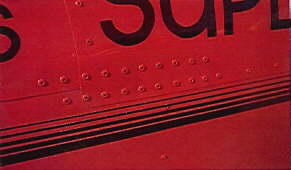 |
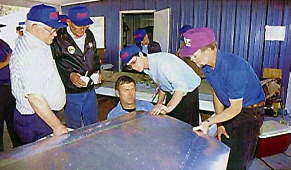 |
| THE SUPER ZODIAC features the use of Avex blind rivets which are installed much like hardware-store "Pop" rivets. Pre-drilled skins allow the plane to be assembled without the use of a construction jig | BUILDING A SUPER ZODIAC can take as little as a week if you have plenty of friends to help. For several years at the Sun 'n Fun airshow, volunteers have completed a Zenair kit in just seven days, with the newly completed aircraft taking to the air on the last day of the fly-in. Here some of the volunteers at this year's event complete the final assembly of a Zodiac wing on the fifth day of the project |
If there is any downside for this fine little aircraft it is that extra care must be taken while it is being pushed or pulled in or out of a hanger or tie down space. The gauge of the aluminum on the fuselage is light and it will not stand the "muscle moves" that many of us are accustomed to use as we push and pull on the tails of our Pipers and Cessnas. Can you afford one and can you build it? First the money. The airframe kit for the Super Zodiac costs $13,640 US. The 912 Rotax engine package which includes everything that's needed forward of the firewall adds $10,595, and the instrumentation for the engine costs an additional $1,050. Add it all up and you have about the cost of a good car, but that won't go at 140mph, even down-hill. And about the build-it-yourself part. YES. YES. YES! Even though I have never been able to install a door in my home properly, I know I could build one because I was one of the volunteers that helped to put a Zenair kit together in just seven days at Sun 'n Fun a few years ago. It is about as simple a project as a homebuilder could expect. The pre-cut sheets of aluminum that form the fuselage and wing skins are mated to the formers and ribs with Avex blind-rivets which are installed in much the same way as pop-rivets. No jig is necessary. The use of a power blind-rivet gun makes the assembly process a very quick affair. After a few hours on the project I felt like an old pro.
On the seventh day they handed each of the volunteers a felt-tip pen and we signed the side of the plane.
Then Chris started to motor and made a beautiful test flight. The factory claims an individual can expect about 500 hours construction time. I expect some people may take a little longer but this is child's play compared with the 1,800 plus hours that it takes to complete some so-called quick-build kits.
If you are looking for a new two seater that is cheap to operate, great fun to fly, and can be assembled in a remarkably short time, the new Super Zodiac CH 601 HDS could be just what you have been waiting for.
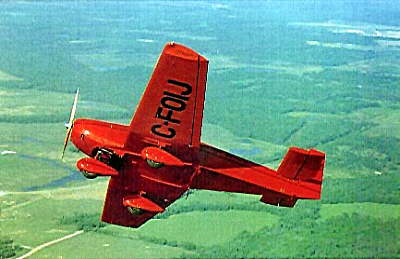 |
| THE CONTROLS in the Super Zodiac 601 HDS are so light and quick that it is hard to keep from wheeling her around in the sky. Despite an impressive +6 and -6G design, the factory does not recommend aerobatics |
